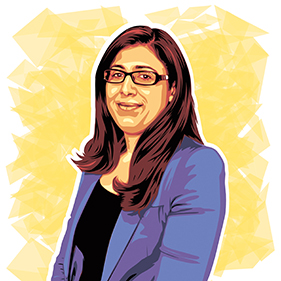Autism therapies blur boundary between clinic, everyday life
Modern treatments for autism are often led by parents and integrated into a child’s daily life.

Most researchers agree that the earlier we intervene in children with autism, the better. Like many people in the autism research community, I advocate for early identification and intervention.
Research in animals and people alike reveals that changes to an individual’s environment can alter his development. This is especially true if these modifications are made early in life, when the brain has the most capacity for change. This capacity, which neuroscientists call ‘plasticity,’ underlies the rationale for early intervention.

Spectrum of care
But parents face an overwhelming marketplace of therapies for autism. Some are pseudo-treatments, but others are evidence based. The details of the treatments differ greatly: in content (the best strategies for teaching new skills), who delivers it (parent, teacher or therapist), when and where they deliver it (a set time in a particular place or throughout the day in the home or preschool), and the best ‘dose.’
There is still much debate about these important elements. Yet to a great extent, the diversity of approaches represents progress in the field. Autism is such a heterogeneous condition that no one treatment works for all children.
What’s more, many modern therapies are far less rigid than interventions were in the past. They are more integrated into a child’s daily life, and involve parents as active participants rather than depending solely on clinicians to deliver them. Much of this flexibility in approach relies on an improved understanding of a child’s brain and behavior.
Structured setting:
It’s been 20 years since I first saw an autism intervention in action. As an intern at Montreal Children’s Hospital, I watched a 4-year-old brown-haired boy whom I’ll call Teddy work on picture-naming activities with a therapist. When Teddy showed ‘wanted’ behaviors, such as making eye contact or uttering a sound resembling the name of an object in a picture, the therapist rewarded him with a spoonful of flavored yogurt.
Teddy’s therapy adhered to the classic behavioral analysis approach, in which a desired action is reinforced by a reward. Beyond this, the teaching session wasn’t intended to be fun. As a result, Teddy was resistant to many of the therapist’s prompts, getting angry from time to time, but he played along because he wanted the reward.
Teddy spent 25 hours a week with that therapist, repeating variations of the same tasks. This was considered the minimum time necessary for intervention to succeed. (Many people still believe 40 hours a week is necessary.) For many parents, early intervention for their child is a full-time job — although the parents’ role in the past was largely to bring their child to the sessions, organize their lives around it, and then look through a two-way mirror, hoping for improvement. Parents did not participate in any part of the intervention.
Shortly after seeing Teddy, I left autism interventions behind to train as a scientist. A few years ago, I reconnected to the field through the Intervention within the British Autism Study of Infant Siblings (iBASIS) study, an approach based on the idea of extremely early brain plasticity. Children in the trial received intervention even before any autism features were visible. The therapy involves maintaining positive interactions between infant siblings of children with autism and their parents. I can see how far the field has come, and how much further it has to go.
Some components of Teddy’s intervention are still common — principally, the structure it provides with specific activities, prompts, and routines. We know from research why structure is helpful for children with autism. Social interactions can be overwhelming for these children because they lack the ability to spontaneously detect and interpret social cues. Predictable interactions that follow certain rules are easier for them to understand.
But other aspects of intervention in autism have changed dramatically in the past two decades. These changes reflect a deeper understanding of autism, and of the fact that what works in a clinic does not always work in the real world.
Shifting landscape:
First of all, a successful intervention doesn’t have to be limited to a set time or involve a therapist. Instead, it may involve strategies to help children with autism make use of their acquired skills throughout the day. It is not enough for a child to learn to name an object such as a cup or a toy only when she is prompted by a particular therapist in a particular context. Intervention is only successful if the child spontaneously uses the word in the right context across different environments and with various people.
Today’s therapies also stem from new principles. Many were built upon behavioral analysis, adapting the classical approach used with Teddy. Others, such as that used in iBASIS, originated from theories that focus on exchanges between the child and others. But today, developmental principles guide all intervention designs. That is, we are using new knowledge about how typical children develop and acquire social skills.
For example, we can use our advancing knowledge about the cues and strategies children use to learn words and interpret the social world to teach children with autism the skills they are not able to acquire on their own.
Increasing understanding of development also means that we can push back the clock to intervene when the brain is at its most plastic. Learning about the social world begins early in life, so we can provide therapy to infants who are at high risk for autism, say, because they have a sibling with the condition.
Parent-mediated therapies are now common, blurring the boundary between clinic and everyday life. In these interventions, therapists support parents, who, in turn, use supportive strategies in the home as they interact with their children during play, bath and meals. These approaches are more engaging and enjoyable for children because they harness parental instincts to positively interact with their children. They also empower parents to be active players in their child’s treatment.
Active ingredients:
In the past 20 years, different teams have developed a plethora of models for treating autism. These are increasingly complex, reflecting our expanding knowledge of child development.
But, despite this complexity, researchers are looking for common ingredients1: Is there an optimal ‘dose’ and setting for therapy? Who should conduct the intervention? What should we expect as an ideal outcome?
Better evidence may soon provide some answers. Large trials are replacing the single-participant or small-group experiments that were popular for decades. Large samples give us more confidence about whether an intervention works at the group level. They also may allow us to understand why a given therapy works for some children but not others.
We now know that autism is incredibly heterogeneous. No two children on the spectrum are alike, and their abilities and needs can differ dramatically. One child may have high levels of anxiety and social issues, but have excellent language abilities. Another may have difficulties with sensory processing.
Sussing out the ‘active ingredients’ of different therapies may reveal which elements are ideally suited for which children on the spectrum. Ultimately, the question is not, “What is the best autism intervention?” but “Which method is the best match to this child’s profile of skills and needs?”
Mayada Elsabbagh is assistant professor of psychiatry at McGill University in Montreal, Canada.
References:
- Kasari C. and T. Smith Clin. Psychol. Sci. Prac. (2016) In press
Recommended reading

New organoid atlas unveils four neurodevelopmental signatures
Explore more from The Transmitter
Snoozing dragons stir up ancient evidence of sleep’s dual nature

The Transmitter’s most-read neuroscience book excerpts of 2025


